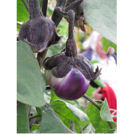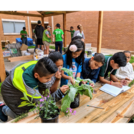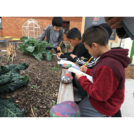
- Subject:
- Arts and Humanities
- Biology
- Life Science
- Physical Science
- Material Type:
- Unit of Study
- Provider:
- 23andMe
- Provider Set:
- Genetics 101







Teacher overview text




Students will explore the biome in which they live while comparing it to other major biomes around the world.Standard(s): 5.L.2.1 Compare the characteristics of several common ecosystems

Short Description:
Body Physics sticks to the basic functioning of the human body, from motion to metabolism, as a common theme through which fundamental physics topics are introduced. Related practice, reinforcement and Lab activities are included. See the front matter for more details. Additional supplementary material, activities, and information can be found at: https://openoregon.pressbooks.pub/bpsupmat/. Order a print copy: http://www.lulu.com/content/paperback-book/body-physics-motion-to-metabolism/26081318
Long Description:
Body Physics sticks to the basic functioning of the human body, from motion to metabolism, as a common theme through which fundamental physics topics are introduced. Related practice, reinforcement and Lab activities are included. See the front matter for more details. Additional supplementary material, activities, and information can be found at: https://openoregon.pressbooks.pub/bpsupmat/. Specific topics covered in Body Physics are: scientific process, units, uncertainty, mass, density, weight, buoyant force, equilibrium, center of gravity, normal force, friction, torque, levers, mechanical advantage, tension, motion, impulse, momentum, the laws of motion, strength and elasticity of materials, work, kinetic and potential energy, power, thermal energy the first law of thermodynamics, efficiency, heat, entropy, and 2nd law of thermodynamics.
Order a print copy: http://www.lulu.com/content/paperback-book/body-physics-motion-to-metabolism/26081318
Word Count: 112607
ISBN: 978-1-63635-046-2
(Note: This resource's metadata has been created automatically by reformatting and/or combining the information that the author initially provided as part of a bulk import process.)

Students will compare different plant traits and determine how each structure helps that species of plant grow and reproduce in the schoolyard habitat. After which, students can observe each plant for acquired traits.

"Botany in Hawai‘i" discusses introductory topics of Botany through examples of the native and introduced plants found in Hawai‘i. It includes anatomy and physiology of seeds, roots, leaves, stems, fruits and flowers and covers the main plant groups from nonvascular to flowering plants. This book provides a visual reference to botanical concepts and terminology for beginners.

Bycatch can be defined as the act of unintentionally catching certain living creatures using fishing gear. A bycatched species is distinguished from a target species (the animal the gear is intended to catch) because it is not sold or used. Marine mammals (whales, dolphins, porpoises), seabirds, sea turtles and unwanted or undersized fish are some examples of animals caught as by-catch The incidental capture of these animals can significantly reduce their populations. The most well known example of by-catch may be the unintentional mortality of spotted and spinner dolphins in the tuna fishing industry. "Dolphin-Safe" tuna was a result of this interaction (Be prepared to discuss how this came about with students, as it is something close to their daily lives). One important aspect to consider when discussing this issue is that laws protect some of the animals caught as by-catch (Marine Mammal Protection Act and Endangered Species Act). In this lesson, students will first be shown pictures of entangled marine animals and will discuss the definition of by-catch This will lead to discussions on why by-catching exists, how it impacts specific animals as well as humans, whether the students believe it is an important issue, and how by-catch can be reduced.

Cell Biology, Genetics, and Biochemistry for Pre-Clinical Students (2021) is an undergraduate medical-level resource for foundational knowledge across the disciplines of genetics, cell biology and biochemistry. This USMLE-aligned text is designed for a first-year undergraduate medical course that is delivered typically before students start to explore systems physiology and pathophysiology. The text is meant to provide the essential information from these content areas in a concise format that would allow learner preparation to engage in an active classroom. Clinical correlates and additional application of content is intended to be provided in the classroom experience. The text assumes that the students will have completed medical school prerequisites (including the MCAT) in which they will have been introduced to the most fundamental concepts of biology and chemistry that are essential to understand the content presented here. This resource should be assistive to the learner later in medical school and for exam preparation given the material is presented in a succinct manner, with a focus on high-yield concepts.
The 276-page text was created specifically for use by pre-clinical students at Virginia Tech Carilion School of Medicine and was based on faculty experience and peer review to guide development and hone important topics.
Available Formats
978-1-949373-42-4 (PDF)
978-1-949373-43-1 (ePub) [coming soon]
978-1-949373-41-7 (Pressbooks) https://pressbooks.lib.vt.edu/cellbio
Also available via LibreTexts: https://med.libretexts.org/@go/page/37584
How to Adopt this Book
Instructors reviewing, adopting, or adapting parts or the whole of the text are requested to register their interest at: https://bit.ly/interest-preclinical.
Instructors and subject matter experts interested in and sharing their original course materials relevant to pre-clinical education are requested to join the instructor portal at https://www.oercommons.org/groups/pre-clinical-resources/10133.
Features of this Book
1. Detailed learning objectives are provided at the beginning of each subsection
2. High resolution, color contrasting figures illustrate concepts, relationships, and processes throughout
3. Summary tables display detailed information
4. End of chapter lists provide additional sources of information
5. Accessibility features including structured heads and alternative-text provide access for readers accessing the work via a screen-reader
Table of Contents
1. Biochemistry basics
2. Basic laboratory measurements
3. Fed and fasted state
4. Fuel for now
5. Fuel for later
6. Lipoprotein metabolism and cholesterol synthesis
7. Pentose phosphate pathway (PPP), purine and pyrimidine metabolism
8. Amino acid metabolism and heritable disorders of degradation
9. Disorders of monosaccharide metabolism and other metabolic conditions
10. Genes, genomes, and DNA
11. Transcription and translation
12. Gene regulation and the cell cycle
13. Human genetics
14. Linkage studies, pedigrees, and population genetics
15. Cellular signaling
16. Plasma membrane
17. Cytoplasmic membranes
18. Cytoskeleton
19. Extracellular matrix
Suggested Citation
LeClair, Renée J., (2021). Cell Biology, Genetics, and Biochemistry for Pre-Clinical Students, Blacksburg, VA: Virginia Tech Publishing. https://doi.org/10.21061/cellbio. Licensed with CC BY NC-SA 4.0.
About the Author
Renée J. LeClair is an Associate Professor in the Department of Basic Science Education at the Virginia Tech Carilion School of Medicine, where her role is to engage activities that support the departmental mission of developing an integrated medical experience using evidence-based delivery grounded in the science of learning. She received a Ph.D. at Rice University and completed a postdoctoral fellowship at the Maine Medical Center Research Institute in vascular biology. She became involved in medical education, curricular renovation, and implementation of innovative teaching methods during her first faculty appointment, at the University of New England, College of Osteopathic Medicine. In 2013, she moved to a new medical school, University of South Carolina, School of Medicine, Greenville. The opportunities afforded by joining a new program and serving as the Chair of the Curriculum committee provided a blank slate for creative curricular development and close involvement with the accreditation process. During her tenure she developed and directed a team-taught student-centered undergraduate medical course that integrated the scientific and clinical sciences to assess all six-core competencies of medical education.
Accessibility Note
The University Libraries at Virginia Tech and Virginia Tech Publishing are committed to making its publications accessible in accordance with the Americans with Disabilities Act of 1990. The HTML (Pressbooks) and ePub versions of this book utilize header structures and include alternative text which allow for machine-readability.
Please report any errors at https://bit.ly/feedback-preclinical

Short Description:
Proteins play vital roles in most biological processes; these roles include acting as catalysts for physiological reactions, as regulators for those reactions, or as structural framework around which these processes can occur. Proteins’ complex organization of diverse functionality in 3D space leads to an astonishing range of function for living organisms. Understanding this intimate relationship between structure and function is the backbone of understanding the natural world and is the key to controlling it. Data dashboard
Word Count: 13793
(Note: This resource's metadata has been created automatically by reformatting and/or combining the information that the author initially provided as part of a bulk import process.)

This resource is intended for an introductory or intermediate-level college genetics course. It begins with an exploration of DNA and genome structure and continues with a study of the molecular mechanisms that drive gene expression. Concepts of classical transmission genetics are linked to the molecular mechanisms that underlie observable phenotypes. It concludes with specific topics that synthesize information from both molecular and transmission genetics, including consideration of topics like epigenetics, cancer biology, and evolution. Examples of both historical and current problems in genetics are presented, along with conversations of the relationship between genetics and society.

Students investigate decomposers and the role of decomposers in maintaining the flow of nutrients in an environment. Students also learn how engineers use decomposers to help clean up wastes in a process known as bioremediation. This lesson concludes a series of six lessons in which students use their growing understanding of various environments and the engineering design process, to design and create their own model biodome ecosystems.

Students will explore the ways that plants get recycled into soil/food for other plants.